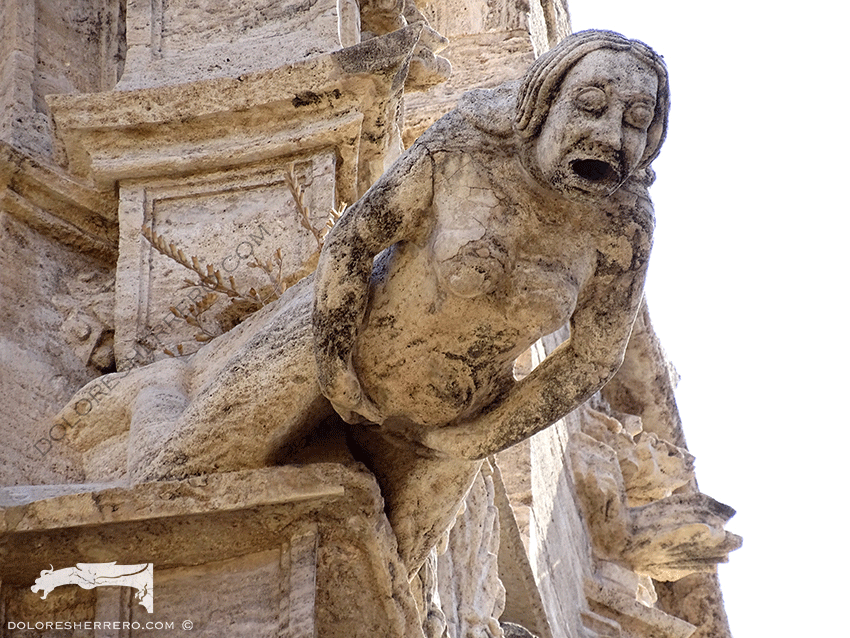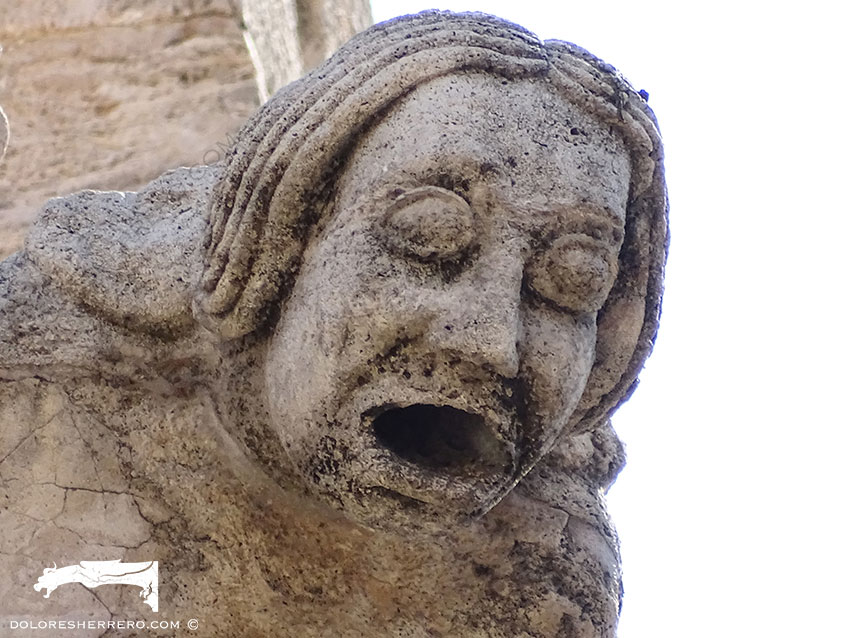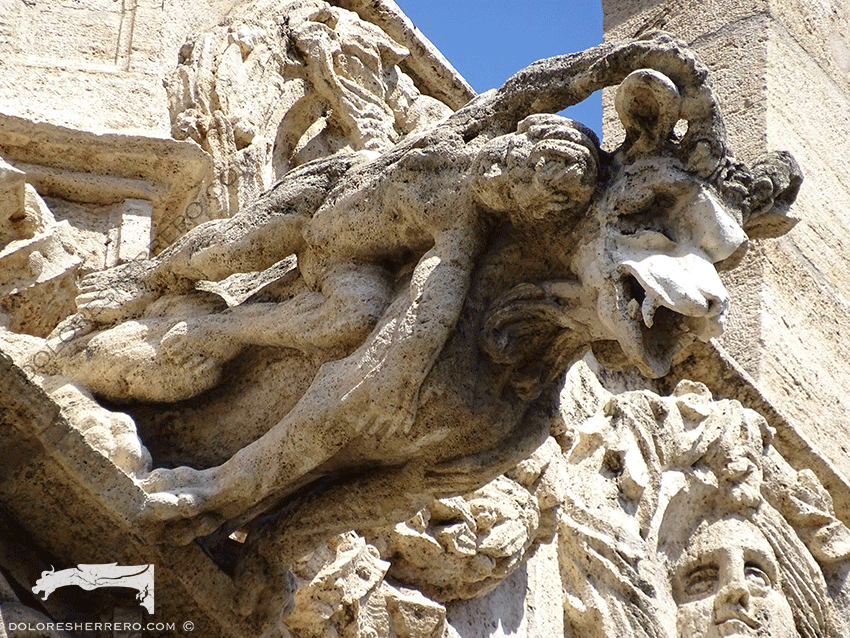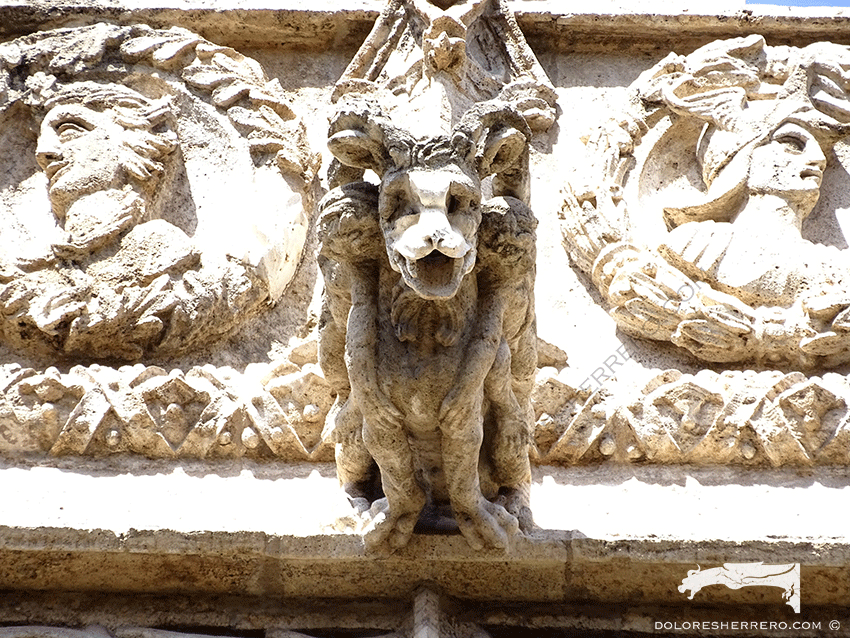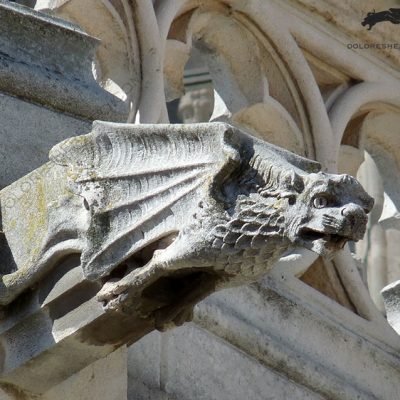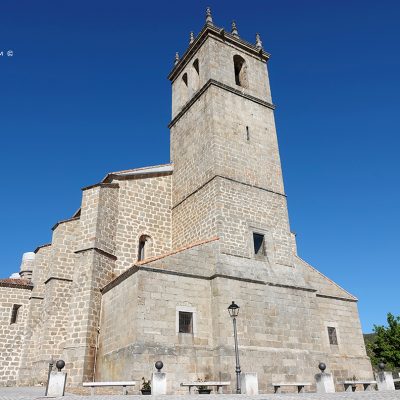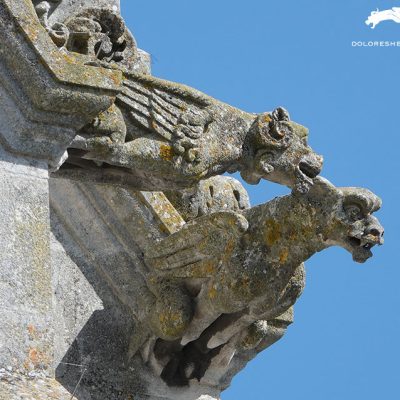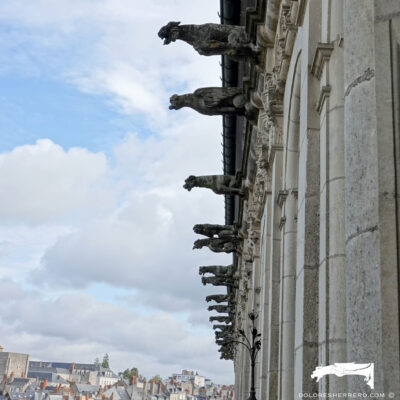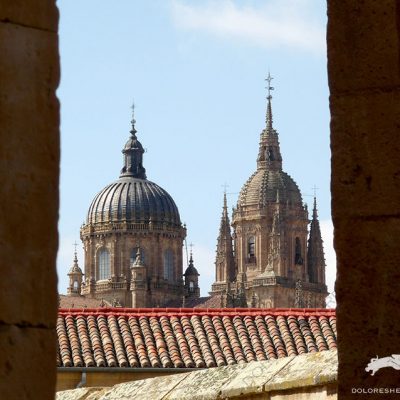Today’s post is dedicated to the most surprising and enigmatic set of gargoyles we have ever come across on our travels.
We are referring, of course, to the gargoyles of La Lonja de la Seda (Silk Exchange) in Valencia (Spain).
By itself, this civic building is an architectural gem; but the gargoyles and numerous chimeras that decorate its walls are an even more extraordinary and attention-grabbing addition.
Work on the building began towards the end of the fifteenth century, in line with the late Gothic style. It is a symbol of the great commercial wealth of the Middle Ages and the importance of the Valencian bourgeoisie. Nowadays, it is a UNESCO World Heritage Site.
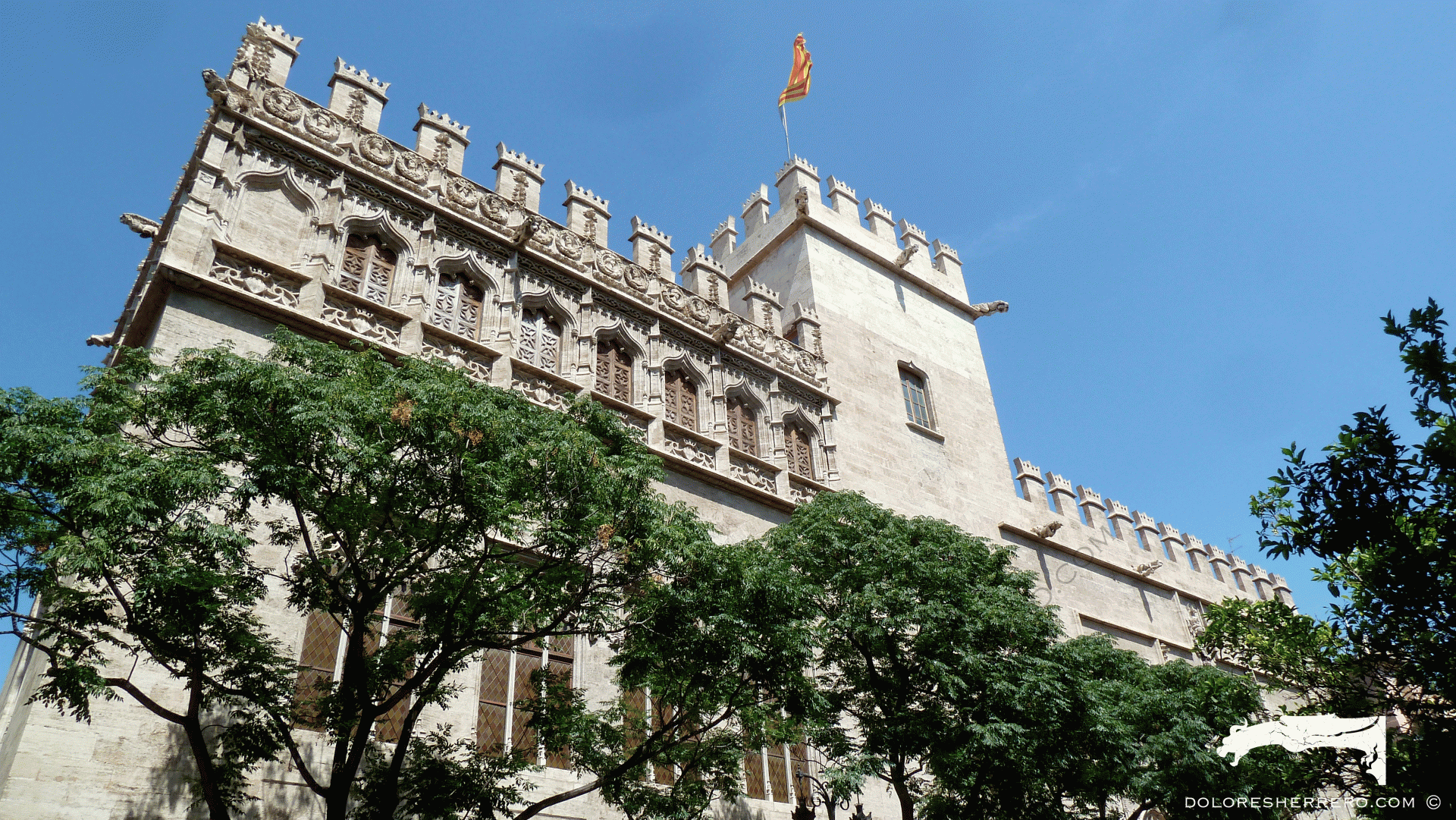
An Exploration of the Gargoyles of the Lonja: Symbolism and Boldness at Great Heights
Some of the gargoyles are from the end of the fifteenth century and start of the sixteenth century, while others are Neo-Gothic. The sculptors who created them include Pere Compte, Johan Corbera, Alfonso de Leo, José Aixa and Antonio Ferrer Gómez.
They are all stunning and deserve to be examined one by one, due to the sheer number of surprising and unusual elements and details they possess and the magnificence of their carving.
Let’s start with a gargoyle depicting a dragon. Although its face has deteriorated, we can clearly make out its reptilian body and enormous wings.

The next gargoyle depicts an angel with one knee resting on the ground. The figure has pupils and curly hair, is playing a Moorish-style guitar, and appears to be singing.
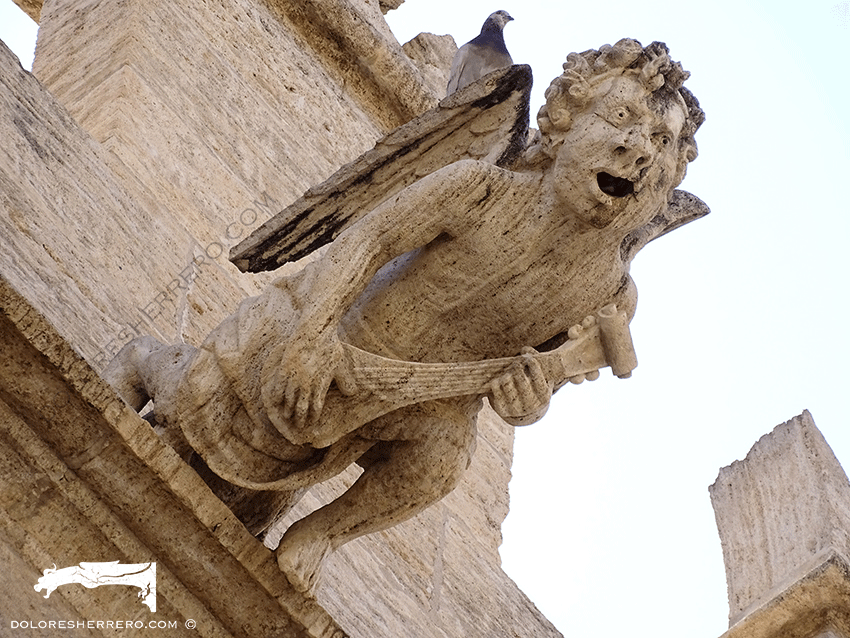
There is also a demon with a dragon-like body, membranous wings, webbed feet and bared teeth. This ferocious gargoyle is carrying (or maybe it has snatched) a small “wild man” that is attached to it on the right-hand side and is holding a stick or stake. The “wild man” transitioned from a figure of malevolence and lust to an exemplar of purity and harmony with nature, embodying the concept of the “noble savage”. It is a gargoyle with a fierce appearance.
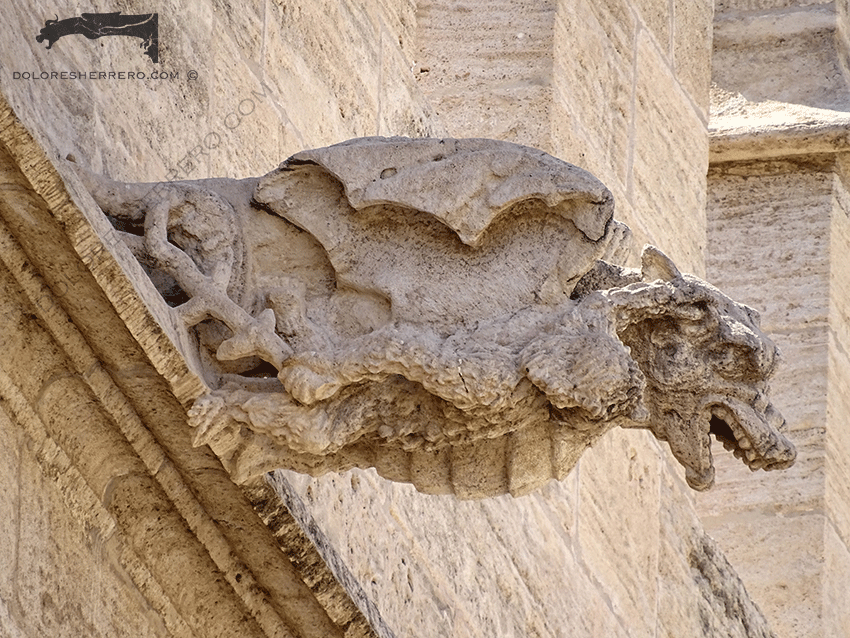
The next figure is that of a bearded man: he is praying while holding a phylactery in his hands, and is emerging from the jaws of a sea creature. This may be a biblical reference to Jonah and the whale.
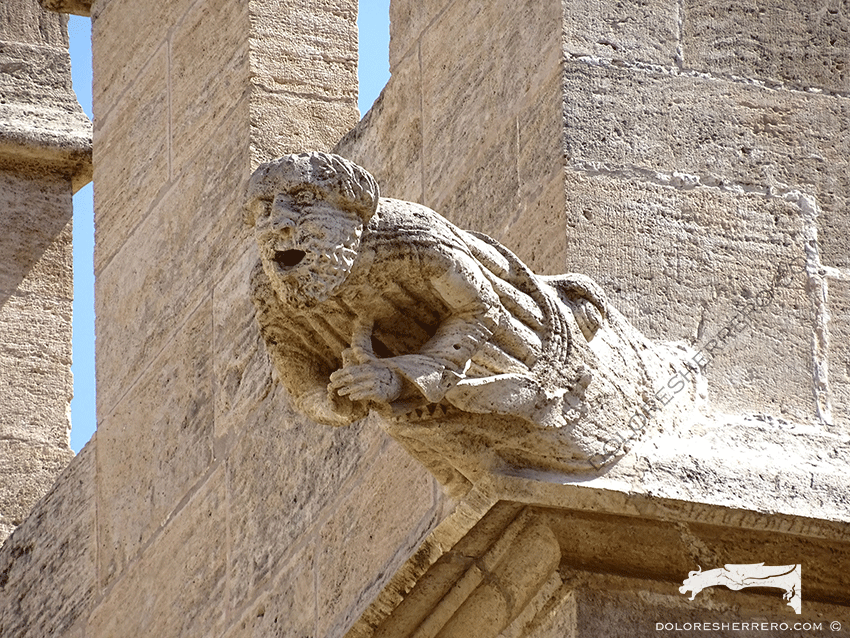
A lion firmly grasps the body of a small creature, which appears to be a reptile. This gargoyle may have a Christian meaning: a lion (Christ) is overcoming a reptile (demon).

The following example is notably unusual. It is a figure of a monk displaying part of his thighs while touching his genitals with one hand. On the left-hand side of his head is the figure of a naked boy. This carving may have a sexual meaning, or bear some relation to the concept of lust. In gargoyles, we sometimes see figures that represent the vices and sins of the clergy, as seen in other representations of marginal art (corbels, brackets, manuscripts, etc.).

There is also a helmeted man, possibly a soldier, carrying a receptacle from which a creature is emerging. The man is grasping the creature — which also resembles a snail — by the neck. Although it has deteriorated, it is nonetheless a very atypical gargoyle.
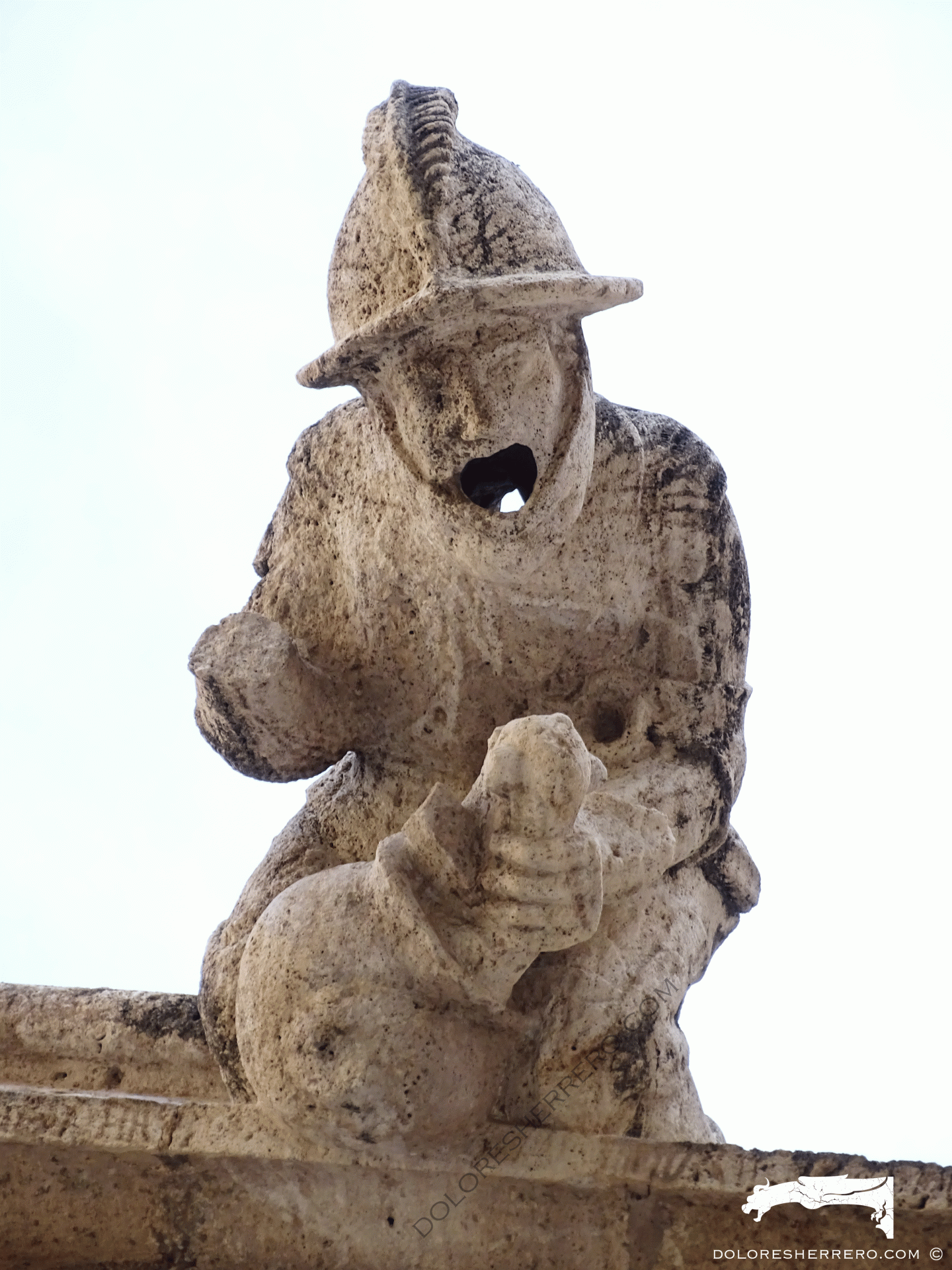
A demon with the head of a billy goat (horns, beard), membranous wings, a dragon-like body and enormous udders, which perhaps have a sexual meaning as they resemble women’s breasts. Huddled alongside it on the left-hand side is a small, naked, anthropomorphic figure with cloven hooves. This gargoyle clearly has demonic connotations.
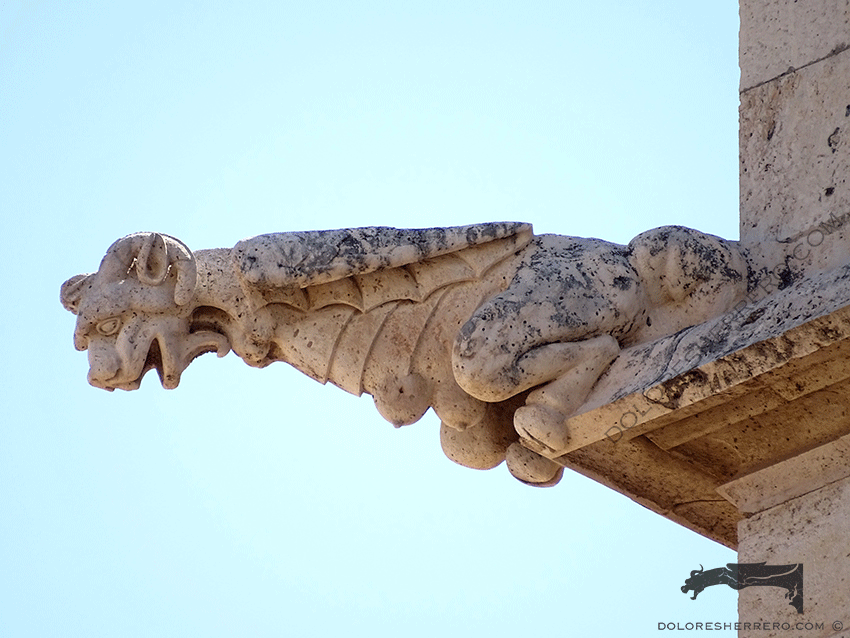
There is also an ape in chains and carrying a drum, which it appears to be on the verge of beating with the drumstick in its hand. It is an extremely expressive figure. The figure of a monkey or ape, when it is in chains, represents the idea of sin conquered by faith and virtue.
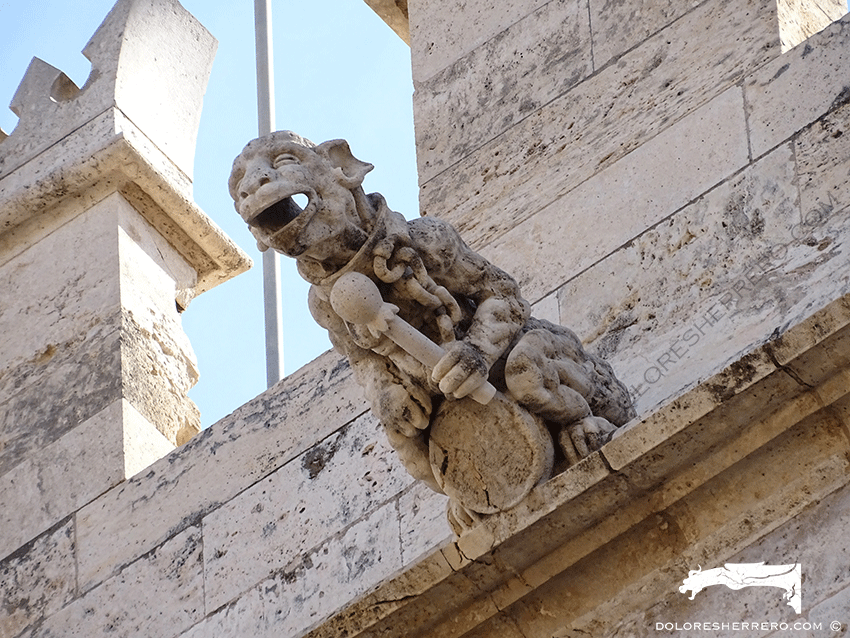
An anthropomorphic demon, with large ears, enormous fingers and wearing a short tunic, is grasping a lizard with both hands. Its expression is unsettling and grotesque, as it appears to be laughing.

The next gargoyle depicts a woman wearing a long dress with folds. Her left knee is resting on the ground while on her right knee sits a monkey, which she is supporting with her hands. Her features are those of an old woman, perhaps a witch. Monkeys have been used to symbolise sin, wickedness, cunning and lust, and can also represent man’s lazy soul. Additionally, they have been used to symbolise the Devil, who is sometimes depicted in the form of an ape.
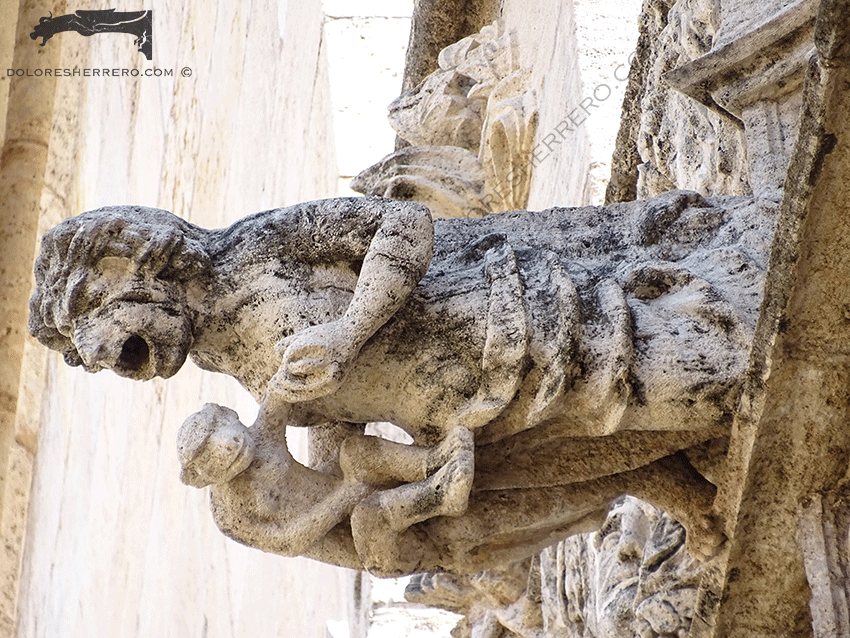
There is also a demon with the tail of a snake, membranous wings, a beard, large eyes and cloven hooves. Its head is monstrous in appearance.
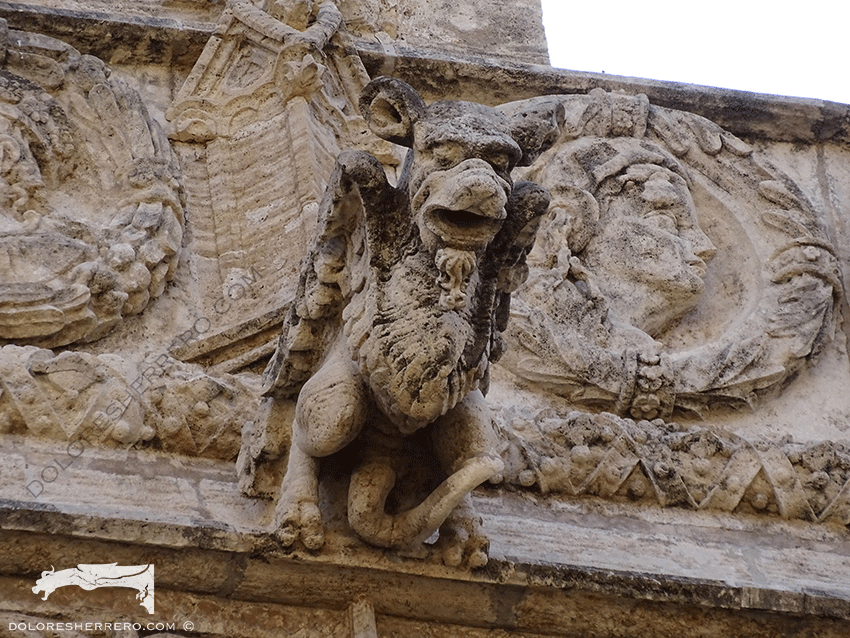
Next is one of the most famous of La Lonja’s gargoyles. This daring and highly explicit, even irreverent, sculpture depicts a naked woman, who is touching her genitalia. Her head is also very unusual, with its rope-like hair and enormous, protruding eyes. It is a magnificent and striking gargoyle, with sexual connotations and related to lust. Valencia was notorious for prostitution, particularly in the fifteenth century, when the city centre was home to one of the highest concentrations of brothels in the Mediterranean region. Perhaps the proximity of these brothels explains the presence of sexualised gargoyles such as this one, with their connections to vice and the sin of lust.
- Valencia Lonja (Spain)
Another winged demon, similar to the previous example, whose long, backswept horns, membranous wings and front-facing crest give it an imposing presence.
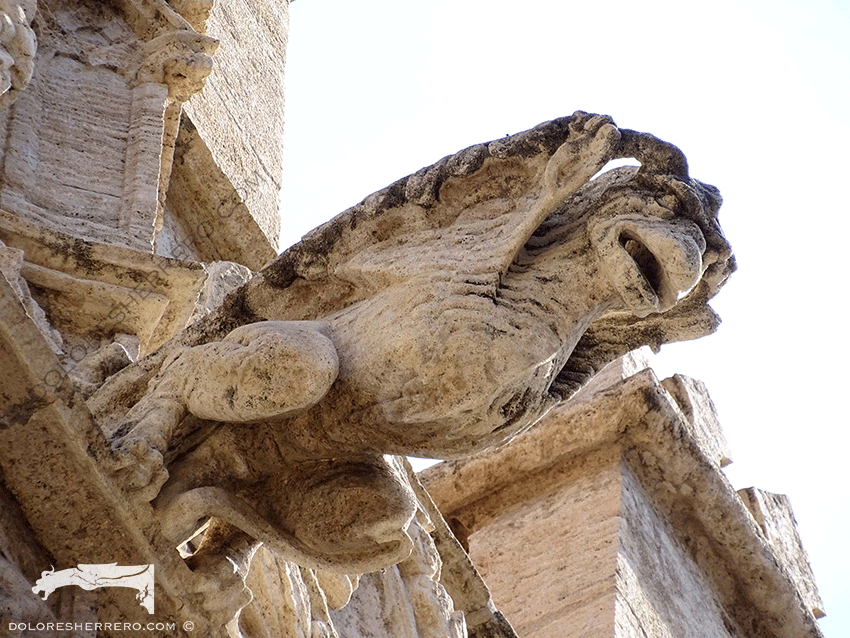
We can also make out the image of a “wild man“, bearded man with long, lank hair, holding a vase in his hands. The body hair also has the appearance of scales.
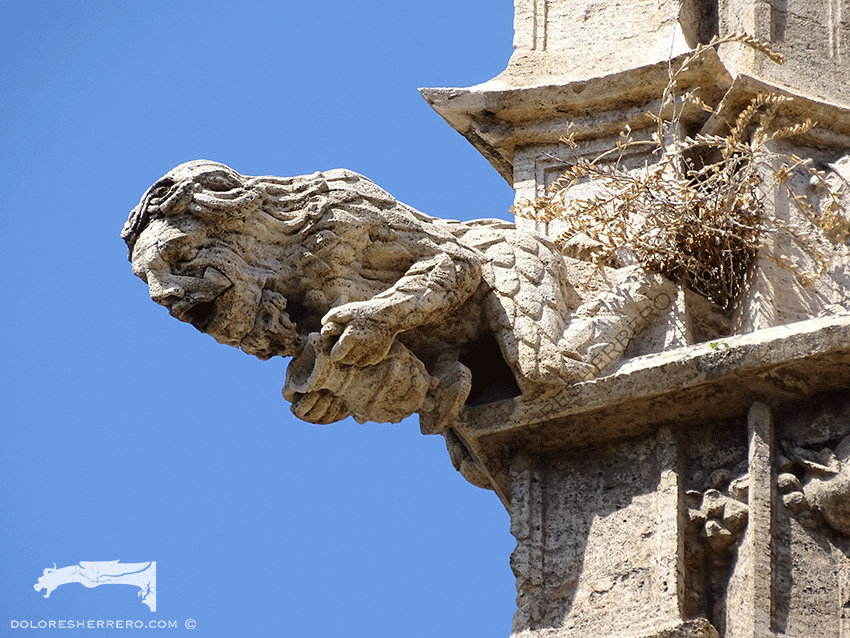
A demon with backswept horns, sunken, ghostly eyes and large fangs is carrying two naked children, one on each side. This gargoyle may represent the Devil carrying off the souls of two sinners.
A bird-like animal, with wings, feathers and a crest, is wearing a headdress with a decorative ball design, thus lending the animal an anthropomorphic appearance. In its beak it is holding a phylactery, which appears to be broken.
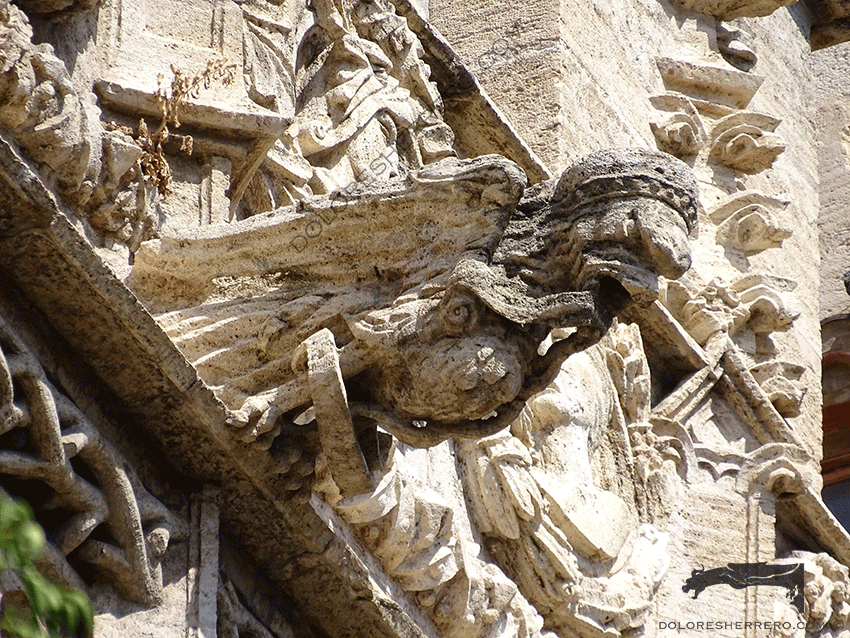
The next gargoyle is both impressive and unsettling. We can make out the figure of a grotesque-looking monk, grasping an animal whose demonic appearance, cloven hooves, long snout and protruding teeth suggest that it may be an allusion to sin.
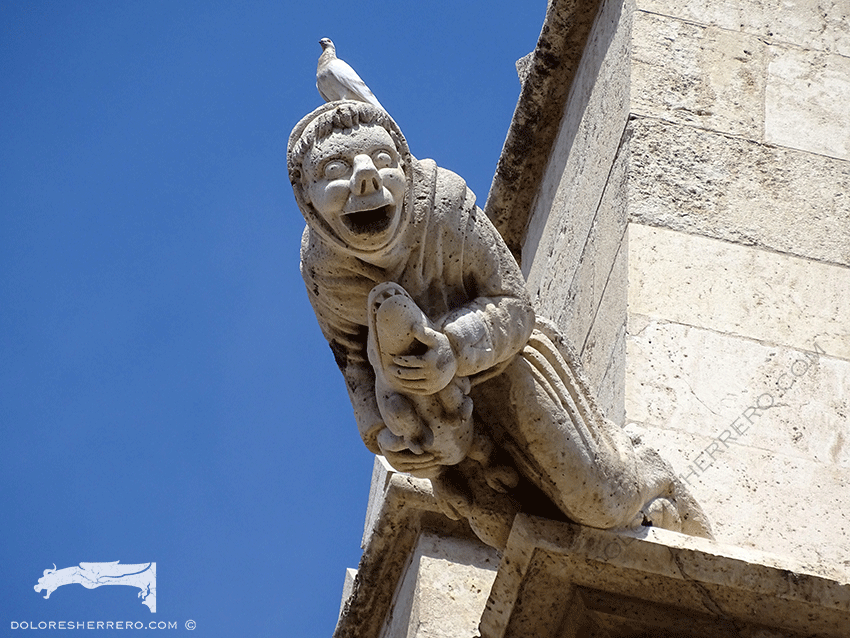
This man with a crown, sceptre and shield, wearing a long robe and with one knee resting on the ground, appears grotesque and even sarcastic owing to his wide mouth and protruding teeth.
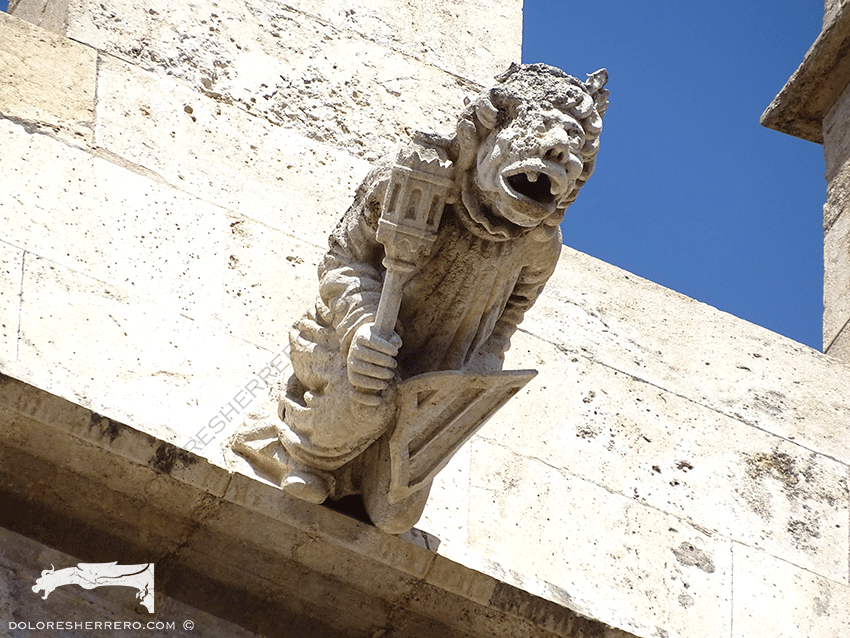
This truly unique and rather shocking gargoyle is a doccione, comprising a human figure wearing a long robe and holding up what appears, from its size, to be a naked boy. The boy is baring his bottom.
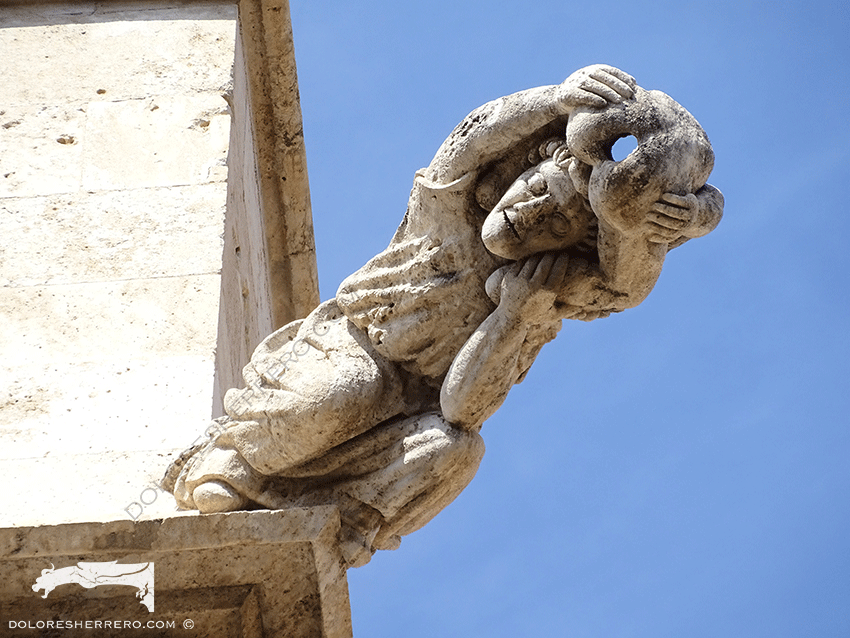
A bearded man wearing a crown-shaped headdress is prising open the jaws of a lion. This figure may be a reference to Samson.
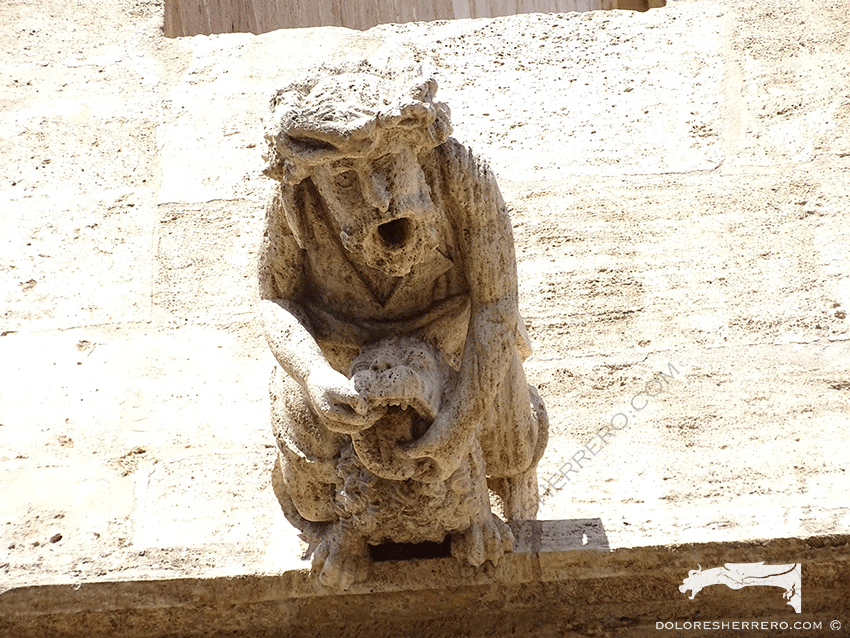
Another chained ape is grasping a naked boy. The meaning of this sculpture is unclear: the boy appears to be hanging on to the animal’s mouth with his hands, although the ape may also be trying to devour the child.
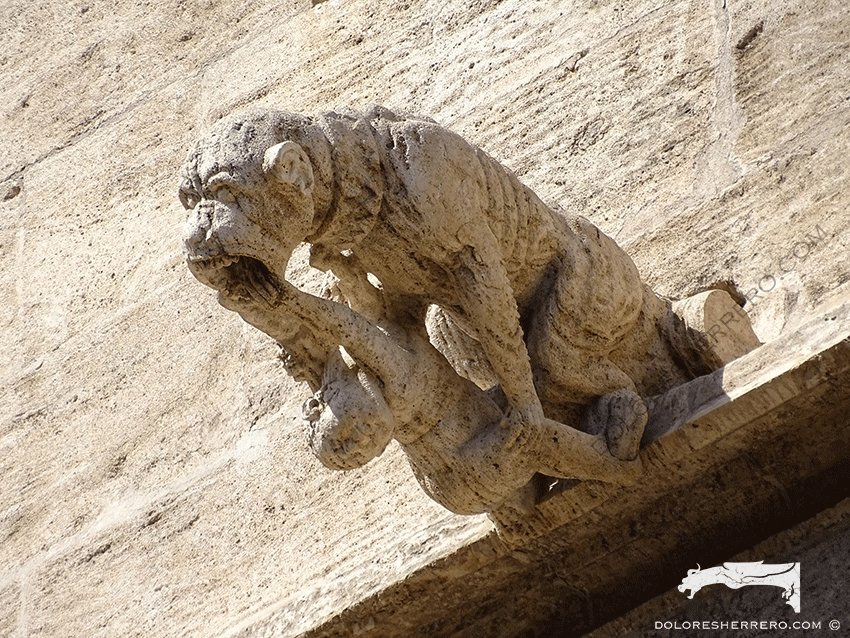
A “wild man” is grasping a reptilian, demonic-looking animal, whose tail is wrapped around one of the man’s wrists.
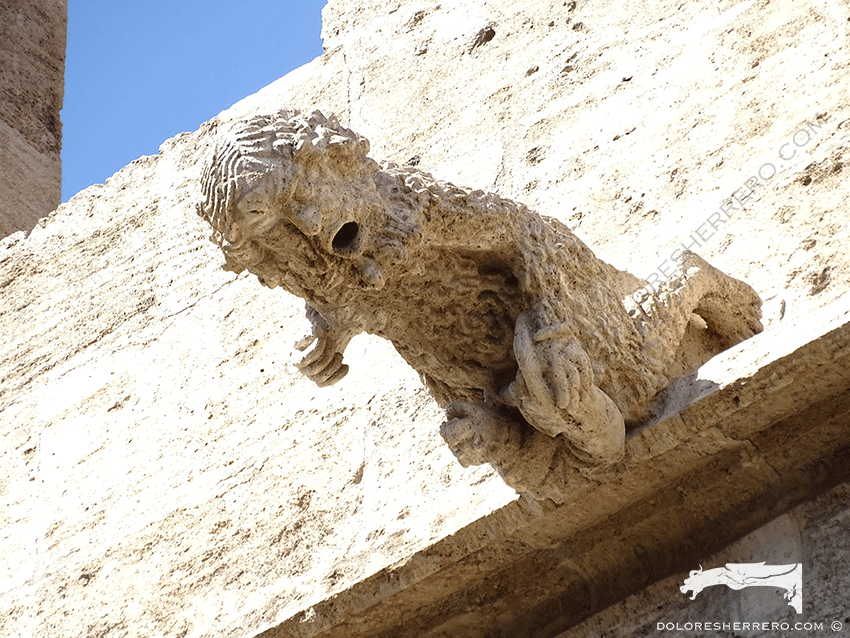
The next gargoyle is one of La Lonja’s more outlandish sculptures, and also has clearly sexual connotations. It depicts an angel (whose membranous wings suggest it is a fallen angel, i.e. the Devil) inserting its penis into a jug. The figure is both unusual and highly striking.
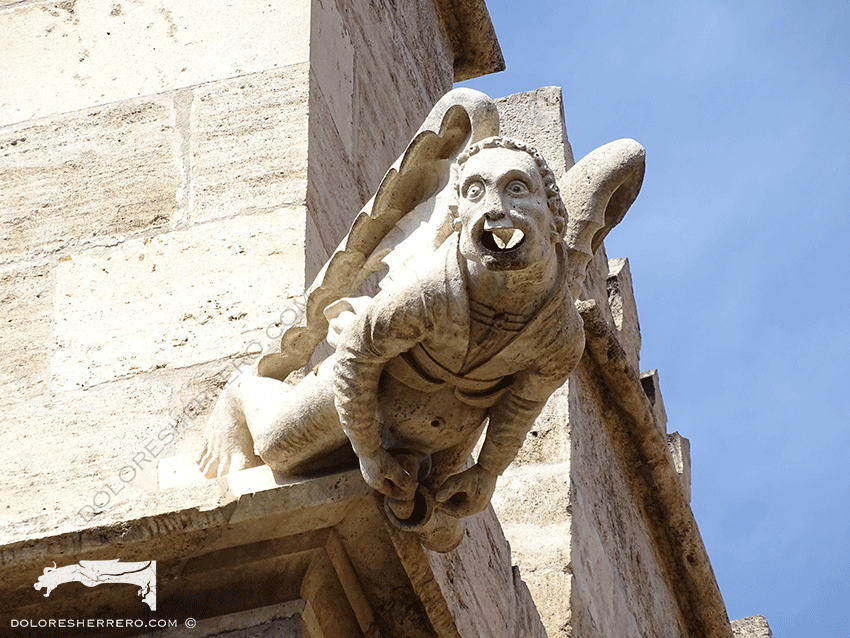
The next gargoyle is a stunning depiction of a griffin. The carving of the feathers on this mythological animal, which was said to be half eagle and half lion, is truly magnificent.
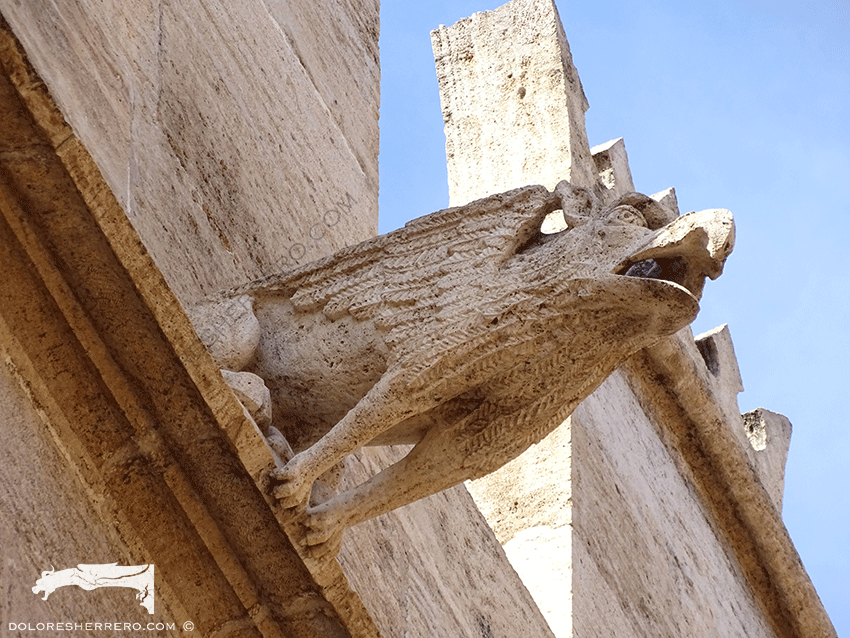
A grotesque-looking man is being attacked by a demonic animal with pointed ears and a webbed neck. The creature is biting the man’s right arm, which has become dislocated. This sculpture may also represent a sinner being attacked for his transgressions.
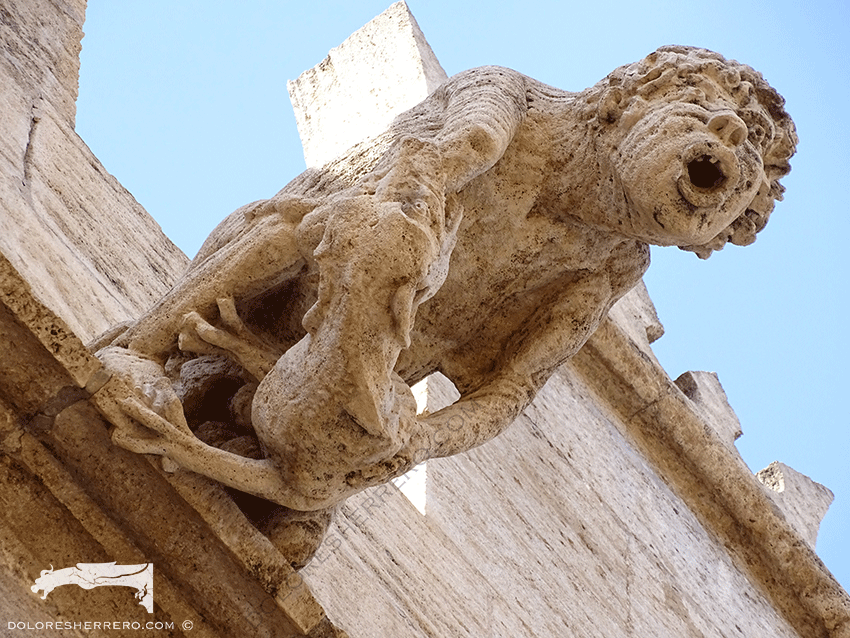
A haughty eagle is standing over a demon with large jaws, bat-like wings and a scaly body. The eagle is a symbol of Christ, and here it is standing triumphant over the figure of the Devil, perhaps in reference to the struggle between good and evil.
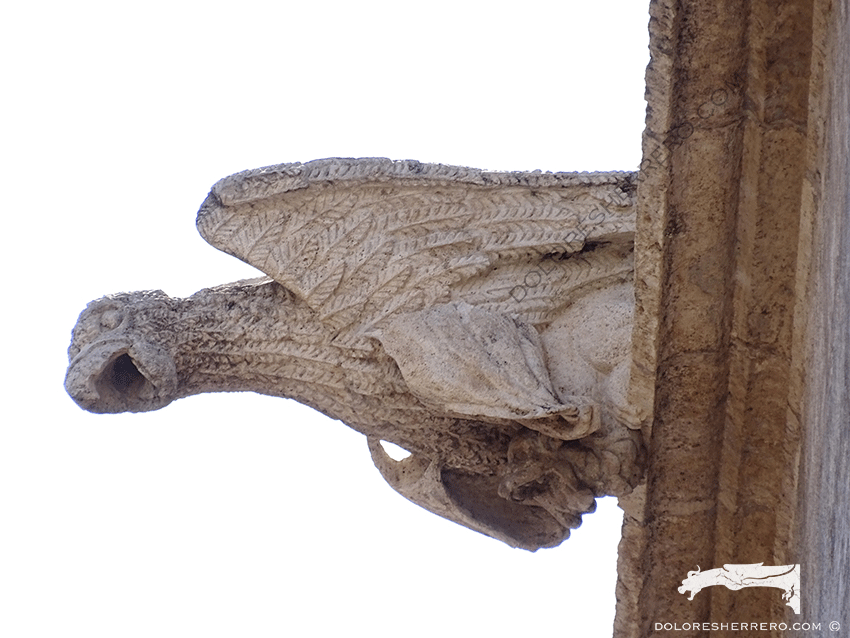
The final gargoyle is truly exceptional. It depicts a demon in the form of a gastrocephalus, with a second demonic head — resembling a mask — protruding from its stomach, along with faces on its thighs; a feature that is characteristic of certain depictions of demons. The figure has human hands, a scaly body, membranous wings, horns, pointed ears and large fangs, and is cradling a reptile like it would a child. It is an extraordinary and impressive gargoyle.
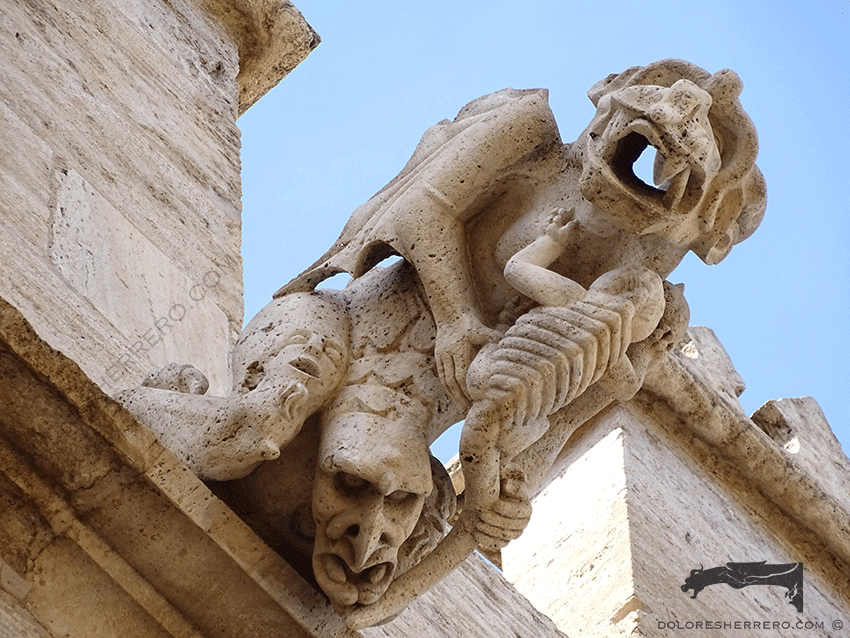
The gargoyles of La Lonja in Valencia are characterised by a range of features and connotations. The sheer variety of the iconography is incredible, while the figures themselves are wildly imaginative, superbly carved and replete with mysterious details. Some of the sculptures have a clearly sexual connotation, perhaps — as mentioned above — due to the number of nearby brothels at the time, or perhaps to provoke a reaction in passers-by, who would have been stunned by these brazen and even irreverent images. Other carvings may depict sinners, the fight between good and evil, and even biblical references. The gargoyles of La Lonja are impertinent, sarcastic, grotesque, excessive, expressive, and terrifying. Above all, however, they possess an unrivalled sculptural beauty, and constitute an artistic heritage that is worthy of admiration.

Doctor of Art History and researcher specializing in the study of gargoyles.
I am Dolores Herrero Ferrio, and my thesis, “An Approach to the Study of Gargoyles of Gothic Cathedrals in Castilla and León”, is dedicated to the study of these fascinating figures.
If you like gargoyles and art history, you will also enjoy my book, “The Gargoyle and Its Iconography,” a book I have written with great care for those interested in the world of gargoyles.
I have created my own Encyclopedia of Gargoyles, a Gargopedia to share with you, where you will discover all the secrets and wonders of these enigmatic sculptures.
I hope you enjoy this Gargopedia as much as I have enjoyed creating it, and remember that each gargoyle has a story to tell, and here you will discover them all.
